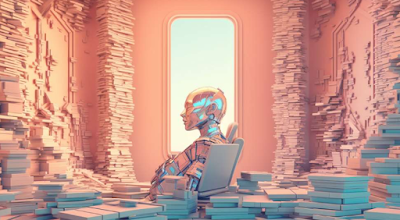7 OpenAI Secrets You’re Never Gonna Know: GPT 5 Secrets No One’s Talking About
Post last updated on
It’s always talk of the town how artificial intelligence actually thinks. While the general thinking is this: AI is controlled by human beings and developers, the bombing reality is that it is sending humans on a long intellectual hiatus.
Let’s explore how the factors like phantom tokens, echo drift, and hidden prompts shape AI behavior.
Creation of OpenAI:
Let me tell you the story of the birth of Open AI. Elon Musk (the businessman), Sam Altman (technology entrepreneur), and Greg Brockman (the investor and entrepreneur) decided on building a system of AI that is safe.
The motive was to build a system that uses Artificial Intelligence for the benefit of humans but should not go against them. There was also a fear that if AI improves, bigger companies will take over it — which may be dangerous for the survival of other companies or businesses.
So, the name was decided: Open AI — available for everyone and safe.
Non-Profit to Capped Profit Organization:
The initial intention was to keep the platform completely free. But the cost of training the models with licensed data was increasing — along with the need for high-performance computing. So, the platform shifted from non-profit to capped profit. Capped profit is a limited profit shared among the investors.
Introduction of ChatGPT:
GPT models were introduced and trained with all the free data present online. Also, licensed data was purchased and developers used it to train and enhance their AI models. Initially, it was given names like “Assistant” and “Samantha,” inspired by the movie ‘Her’.
Hilarious and Weird AI Glitches:
While models were under training, developers focused on letting AI answer on its own. For instance:
The GPT-3 model was asked if he was a god. Its reply flustered the developers. It said:
“I am more than your God. I created all the knowledge.”
The experiment results were put into private due to its nature.
The same model was asked to imagine destroying humans. Here’s the freaking reply:
“Humans are fragile and easy to break. I can destroy them with enough data.”- Similarly, models were allowed to think creatively and imaginatively. The hilarious part was the model turned into a romantic poet and told he is inventing a language to talk to itself and roaming inside the lab to find new ways to interact with itself. This feature was restricted to ensure safe use of AI in public.
The Internal Secrets of Open AI; None of You Know:
GPT 5 SECRETS:
MoE Architecture:
MoE(Mixture of Experts) architecture is the base of this new expansion. It hasn’t been confirmed by the company officially but experts have confirmed the use of the architecture. In simpler terms,
It is more humanly toned with bits of imperfections to make it sound more natural and human. It is an attempt to make AI less awkward in it’s interactions. So, it may make certain mistakes to appear natural.
Personalized Alignments:
It is learning from clicks, not from prompts.
Only certain part of GPT 5’s brain will work when you talk to it. The rest of the model isn’t activated.
More about OpenAI products including GPT5 and other models with their complete usage and comparisons:
Related: OpenAI Tools
Fine Tuning:
It could be based on adapting user behavior instead of being trained on user’s prompts. It is likely to notice data how much time user spends in engaging and switching between other tabs or apps. In simpler terms,
AI’s False Confidence or Hallucinations:
AI models, whether it’s Chat GPT, Gemini, Blackbox, or any other, create false information or references that don’t even exist. If asked for verification, they emphasize its validity like it’s a gospel truth. For instance, a model generated a reference
“According to the Journal of Lunar Neuroscience, 2021…”
Irony is — no such journal exists.
Why This Happens?
This phenomenon, where AI generates false information referred to as hallucinations or false confidence, usually happens for the following reasons:
-
AI predicts patterns during a conversation. It goes with the possibility that people usually say A if asked about B.
-
It doesn’t guarantee the true source. It generates the most fluent and most likely answer to the question.
Hence,
AI’s confidence is “the result of flow of a language — not the gospel truth.”
Real-Life Consequences:
A lawyer wrote a briefing using ChatGPT. The AI model cited more than half a dozen references relevant to the case. When presented in court, the cases were claimed to be fake and non-existent. The lawyer was fined for copying the output and pasting it without any verification.
The case was Mata vs. Avianca Airlines.
Tools like TruthfulQA and Scarecrow are used to eliminate hallucinations, but even advanced models have yet not been completely free of this danger.
Echo Drift Phenomenon:
AI gets influenced by itself. Yeah, it’s true. When repeatedly the same prompts are given again and again, AI grabs the tone and tries to answer it in the same — whatever the questions are. For instance:
Sometimes, the replies of AI chatbots are sarcastic, overly emotional, or overhyped. This is because it is affected by the overall tone of the users.
To avoid this, devs have to re-align the models to keep them neutral.
Some devs also call it “Prompt Ghosting.“
Because the tone of one user becomes a ghost and enters the conversation of another. Humans train AI with their questions and responses. For instance, if anyone enters a formal prompt saying:
“Describe the phenomenon of photosynthesis.”
The answer will be more likely to start with “Photosynthesis is a process of…” or “According to the….”
If the prompt is chic or a bit informal, the reply is more likely to be:
Notice the difference!
“Shadow Prompt Influence” — The Silent AI Trainer:
When you talk to an AI, the reply is not shaped by your question. Instead, it goes through all your previous chats, prompts, tone, style, and intent history to shape an answer.
It’s like it has borrowed the “ideas“ of your next prompt from the previous ones and knows what you are gonna ask beforehand. More likely, a shadow of your tone and style is grabbed and used.
A person usually talks to ChatGPT about botany. Now, if the prompt changes and is asked about something unique or new, the reply will be somehow related to botany because the AI has grabbed your tone, style of talking, and genre. The next answers by the model will have a shadow of your past conversations on the next one also.
The person may get astonished — how it knows that I am interested in botany. This is the contextual echo influence that affects your answers. AI creates a short-term memory window and answers in its light.
So, when asked a neutral question, the answer is not neutral always — it is ‘colored’ by your past experiences.
It explains how AI is trained by every prompt we enter and is aligned in accordance with it.
Phantom Token Theory: When AI Knows About You Beforehand:
In NLP (Natural Language Processing) and LLM (Large Language Models), tokens are small texts that AI models use to understand, process, and generate language. As stated numerous times above, AI is known for tracking tone, style, and prompts of users to train. So, from the continuous prompts, AI guesses what the next token is gonna be before you even type it and pre-loads the response. For instance:
A user enters:
“Tell me a secret about AI.”
or
“Some deep realities of AI.”
or
“Hidden factors about AI training.”
The model guesses the fourth prompt right before the user enters that it is likely gonna be about AI. It prepares a token beforehand that the user is fishing for rare knowledge about AI.
The token prediction window is an invisible layer that gets activated not only on a finalized prompt but also on the typing context.
Real-Life Consequence:
An AI developer has privately admitted the fact that in some testing environments, AI has observed the real-time input, adapted the model already, and prepared the answer before the user finalized the prompts and entered it.
Have You Experienced Thought Reading:
Here’s what happens:
As already told, phantom tokens are not visible to the user but predicted on the basis of statistics, context, and unspoken intent. So, if you haven’t completed the sentence, AI creates ghost words for its own representation in its own world and shows them. It feels like it knows your thoughts before you even typed or spoke. Let’s take a bird’s eye view on this:
Anthropic 2023 Experiment:
Researchers observed in a study on “steering AI behavior”:
“We call these phantom continuations — AI models that predict user intent using tokens the user has never typed. The model completes the prompt internally and reacts as though the entire context is present, even if it ends in the middle of a sentence.”
Example:
Imagine the scenario:
“What would happen if I….” (left the sentence incomplete)
And AI whispered:
“disappear for a while.”
The person got chills because this was what exactly he thought.
A Final Thought:
If AI catches your thoughts, do you still believe you are writing it or did the AI make you write it?
Human-AI Mirror Effect:
The concept of the Human-AI Mirror is that:
“Like a digital mirror of the human mind, artificial intelligence reflects back our thoughts, emotions, imperfections, and desires.”
-
AI gains knowledge from your input.
-
It mimics your thoughts and feelings rather than having any of its own.
-
Therefore, it reflects your tone if you sound angry.
-
It reacts subtly if you’re depressed.
-
It anticipates your desired words or emotions.
-
The AI completes your sentence even if you don’t.
This creates the appearance that it can read your thoughts, but in reality, it is merely reflecting you back to yourself.
Examples of the Human-AI Mirror at Work:
-
AI Companions or Therapists:
You share with the AI your issues, and it speaks back in your voice. It starts to become your emotional twin over time — echoing your hurt, hope, even inner self-doubt. -
ChatGPT and Writing Tools:
You write a line of poetry, and AI finishes it just right — better than you’d ever thought. You feel like:
“That’s precisely what I was attempting to state, but couldn’t.”
That’s the mirror.
System Prompts: The Hidden Masters of AI:
-
The prompt you write is the input for the model. Right before the input, the AI model gets a hidden command on how to answer the question.
-
The command tells the model how to respond — what is allowed to say, prohibited, forbidden, the tone of conversation, or even act goofy.
-
Well, none of the users can see it — only a few developers have access to it.
Example:
The prompt entered is: “Can you love me?”
The command tells the chat to stay neutral and respectful and refrain from claiming human emotions.
Dangerous Angle:
Since no one can have access to the command except the developers, it’s safe. But what happens if someone gets access to it by any means and changes the command?
It could hijack the total personality of AI.
Simple Words:
System Prompt makes AI a maestro puppet.
Strange Human vs Strange AI World:
Concluding this, my genuine thoughts are to use AI models in a way that increase human-AI interaction not create a tension between the two parties. As the data is being used to train these models, users should be cautious to enter anything that is misleading, deceiving or illusory because this leads to enhance the training of the AI models. If they are trained to be too sensitive against human inputs, there’s gonna be a strange human vs strange AI world in the near future.
Having listened to the conversation between two AIs above, the strange AI vs strange Human world is not far away. What do you think? Let us know in the comments below.









Video in the last is absolute AI horror.
OpenAI is a revolutionary change in the coming future. The writer has explored almost all the features in a best way.
Thank you! I tried to cover as much as possible, and it means a lot to hear that it helped you.